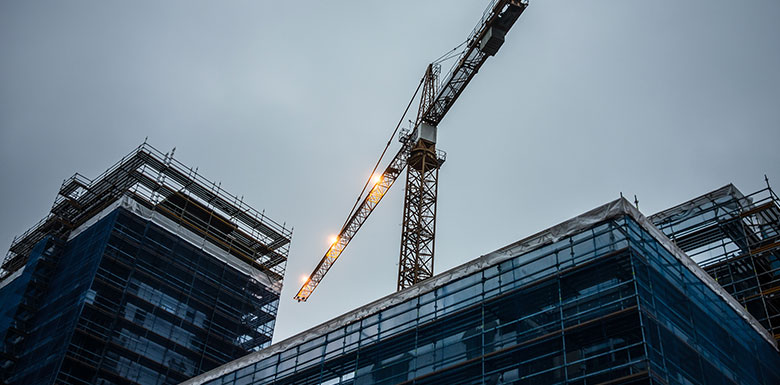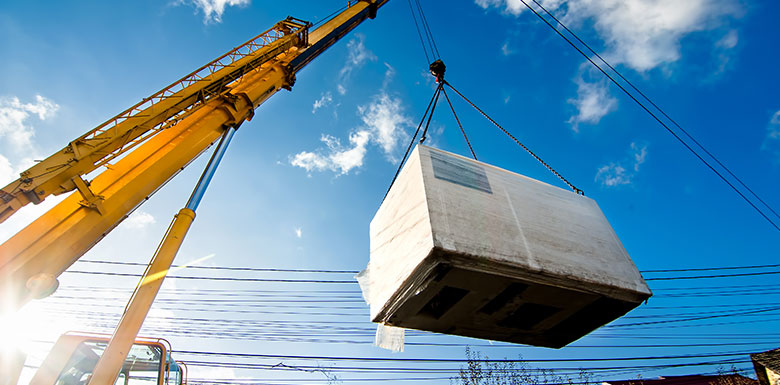New York City Crane Accidents
Crane accidents in New York City pose significant risks to construction workers and the public. Despite stringent safety regulations, these incidents continue to result in severe Personal injury and fatalities. Nationally, crane-related fatalities have shown a downward trend, decreasing from an average of 78 deaths per year between 1992 and 2010 to 42 deaths annually from 2011 to 2017. However, New York State ranks third in the nation for such fatalities.
The primary causes of crane-related fatalities include workers being struck by objects or equipment suspended by cranes. Other crane-related accidents and injuries involve workers being struck by falling objects, overloading, crane collapses, and mechanical failure.
Understanding the causes, legal requirements, and compensation options is crucial for injured construction workers and their families following a crane accident. Whether navigating workers’ comp claims or pursuing a lawsuit, being informed about your rights can significantly impact the outcome.
Common Types of Cranes in NYC
Climbing Cranes (Tower Cranes)
Climbing cranes are built alongside skyscrapers and grow taller with the building, making them essential for high-rise construction projects.
Key Features & Dangers:
-
- Reach great heights and lift heavy loads.
- Designed for skyscrapers and large structures.
- Overloading, improper assembly, base instability.
Stationary Cranes
Stationary cranes are fixed in one location and are ideal for projects requiring heavy lifting in a concentrated area.
Key Features & Dangers:
- Strong, stable base for precise lifting.
- Ideal for industrial and large-scale assembly projects.
- Mechanical failure, weather conditions, foundation instability.
Traveling Cranes (Mobile Cranes)
Traveling cranes can move around job sites or between locations, offering flexibility for diverse projects.
Key Features & Dangers:
- Mobile and versatile for multi-site projects.
- Includes truck-mounted and crawler cranes.
- Uneven terrain, operational errors, mechanical wear and tear.
Telescopic Cranes
Telescopic cranes feature a boom that extends and retracts for flexible height adjustments.
Key Features & Dangers:
- Adjustable boom length for varied height needs.
- Compact and ideal for short-term projects.
- Hydraulic system failures, instability at maximum extension.
Overhead Cranes (Bridge Cranes)
Overhead cranes are fixed-location cranes used indoors for moving heavy materials across facilities.
Key Features & Dangers:
- High precision in confined indoor spaces.
- Used in warehouses, factories, and shipyards.
- Improper load handling, track misalignment, mechanical failures.
Floating Cranes (Crane Barges)
Floating cranes are mounted on waterborne platforms for marine construction and salvage operations.
Key Features & Dangers:
- Operate on water for bridge building or port projects.
- Handle heavy loads in marine environments.
- Weather instability, capsizing, poor anchoring.
Loader Cranes (Knuckle-Boom Cranes)
Loader cranes are mounted on trucks and are used to load and unload cargo efficiently.
Key Features & Dangers:
- Compact and foldable for transport and storage.
- Useful for delivery and transport operations.
- Overextension, improper stabilization during operation.
Luffing Jib Cranes
Luffing jib cranes have adjustable jibs, making them ideal for projects in confined urban spaces.
Key Features & Dangers:
- Adjustable jib for tight spaces.
- High load capacity for urban high-rise projects.
- Jib instability, overlapping operations, wind hazards.
Railroad Cranes
Railroad cranes are mounted on rail cars for railway-specific construction and maintenance tasks.
Key Features & Dangers:
- Operates on tracks for railway repairs and maintenance.
- Designed for lifting heavy rail components.
- Derailment, track instability, operational errors.
Crawler Cranes
Crawler cranes are mounted on tracks and excel on rough or uneven terrain.
Key Features & Dangers:
- There is no need for outriggers; it is stable on uneven ground.
- Heavy-duty lifting for large-scale projects.
- Tipping on inclines, improper load balance, mechanical breakdowns.
Hammerhead Cranes
Hammerhead cranes have a fixed horizontal jib capable of rotating for precise heavy lifting.
Key Features & Dangers:
- High load capacity for industrial and high-rise projects.
- Fixed jib for precise and efficient operations.
- Structural stress, rotational instability, overloading.
What Causes NY Crane Accidents?
Crane accidents in NYC are often the result of a combination of human error, equipment issues, and environmental factors. Below are the most common causes:
- Insufficient Training: Untrained operators may not know how to handle hazards or operate the crane safely, increasing accident risks.
- Operator Error: Misjudgments, miscalculations, or mishandling by crane operators can lead to catastrophic consequences.
- Mechanical Failure or Defective Equipment: Broken cables, faulty safety devices, or defective crane parts can result in accidents that could have been prevented with proper maintenance.
- Operator Fatigue: Tired operators have impaired judgment and slower reaction times, raising the likelihood of accidents.
- Overloading: Lifting loads heavier than the crane’s capacity—or even loads near 70% of the limit without extra precautions—can cause the crane to collapse.
- Loss of Control Over Hoisted Loads: Unstable or swinging loads can collapse cranes or injure nearby workers.
- Overextension: Extending the crane beyond its designed reach can lead to instability and collapse.
- Hidden Defects: Structural weaknesses, improper maintenance, or defective parts can lead to accidents even with careful operation.
- Communication Failures: Miscommunication between operators and ground crews or using improper signals can create dangerous situations.
Understanding these causes highlights the importance of proper training, communication, equipment maintenance, and adherence to safety protocols to prevent crane-related accidents in NYC.
Common Crane Accident Injuries
Accidents involving cranes in NYC are among the most devastating construction site accidents, often resulting in life-changing injuries. These injuries create physical challenges and significant emotional and financial burdens for workers and their families. Below are the most frequently seen injuries in crane-related falls:
- Traumatic Brain Injuries (TBI): Impacts to the head during a fall can result in TBIs, ranging from mild concussions to severe brain damage. This can lead to memory loss, cognitive impairment, and permanent disabilities. For example, a crane operator falling from an unsecured platform may face ongoing neurological challenges, preventing them from returning to work.
- Spinal Cord Injuries & Paralysis: Crane accidents often cause spinal cord injuries, resulting in partial or complete paralysis. A worker falling from a crane boom may sustain paraplegia or quadriplegia, requiring costly medical care, rehabilitation, and potential home modifications.
- Broken Bones & Fractures: The force of an object falling from a crane frequently results in multiple fractures. These injuries can vary from minor fractures to severe breaks requiring surgery and extended recovery. For instance, a rigger falling from a crane’s elevated platform due to improper safety measures may sustain broken arms, legs, or ribs, limiting mobility and work capacity.
- Soft Tissue Damage: Torn ligaments, tendons, and muscles can cause chronic pain and reduce the range of motion, even with medical intervention. For example, a worker slipping while navigating a crane’s structure could suffer severe sprains or torn rotator cuffs.
- Permanent Disability or Disfigurement: Severe crane accidents can lead to amputations, scarring, or other permanent disabilities. For example, a worker falling due to a crane’s structural failure may require multiple reconstructive surgeries or lose the use of a limb, profoundly affecting their quality of life.
- Crushing Injuries: Crane accidents involving dropped or swinging loads, collapses, or pinch points can result in crushed bones, organ damage, or fatalities. For instance, a worker pinned by a falling load may suffer severe fractures or life-threatening internal injuries, requiring extensive medical treatment or resulting in permanent disability.
What If a Loved One Was Killed in a NY Crane Accident?
Losing a loved one in a crane accident is a devastating experience that leaves families grappling with emotional and financial hardships. Families may be entitled to file a wrongful death claim to seek justice and compensation for their loss. This may include:
- Funeral and Burial Expenses: Covering the costs associated with saying goodbye to a loved one.
- Lost Income: Compensation for the financial support the deceased would have provided.
- Emotional Distress: Addressing the profound emotional toll and loss of companionship.
Consulting an experienced attorney is crucial to understanding your rights after a fatal construction accident, navigating the legal process, and holding negligent parties accountable.
Tell Us What Happened
"*" indicates required fields



